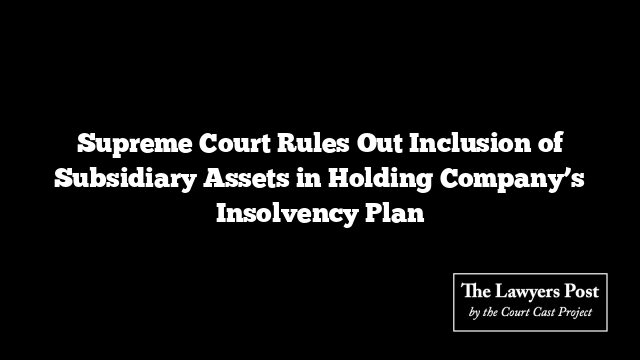In a landmark decision on July 23, the Supreme Court clarified that assets of a subsidiary cannot be incorporated into a holding company’s resolution plan under the Insolvency and Bankruptcy Code (IBC). This ruling underscores the legal distinction between holding companies and their subsidiaries.
The bench, led by Justices Abhay Oka and Pankaj Mithal, dismissed an appeal challenging the National Company Law Tribunal’s (NCLT) decision. The appeal was made by a Successful Resolution Applicant of a Corporate Guarantor, which sought to include subsidiary assets in the resolution process.
The court emphasized that a holding company’s ownership of a subsidiary’s shares does not equate to ownership of the subsidiary’s assets. Consequently, the subsidiary’s assets cannot be part of the holding company’s resolution plan.
The case involved Gujarat Hydrocarbon and Power SEZ Ltd. (the corporate debtor) and M/s. Assam Company India Limited (ACIL), which provided a corporate guarantee. Following the corporate debtor’s default on a Rs. 100 crore loan, the financial creditor invoked ACIL’s guarantee. This led to the initiation of the Corporate Insolvency Resolution Process (CIRP) for ACIL. Despite a successful resolution payment of Rs. 38.87 crores by BRS Ventures, the financial creditor later sought recovery from the corporate debtor, which resulted in further legal proceedings.
The court upheld the NCLAT’s stance that subsidiary assets remain separate from the holding company’s resolution plan. It confirmed that, per Sections 18 and 36 of the IBC, such assets are excluded from the liquidation estate, reinforcing the principle that shareholders do not possess ownership over company assets.
Regarding subrogation rights under Section 140 of the Indian Contract Act, the court ruled that while a surety can recover amounts paid on behalf of the principal debtor, this does not extinguish the principal debtor’s remaining liabilities.
In sum, the Supreme Court affirmed that holding companies cannot claim subsidiary assets in their insolvency proceedings, maintaining the clear legal separation between distinct corporate entities.





